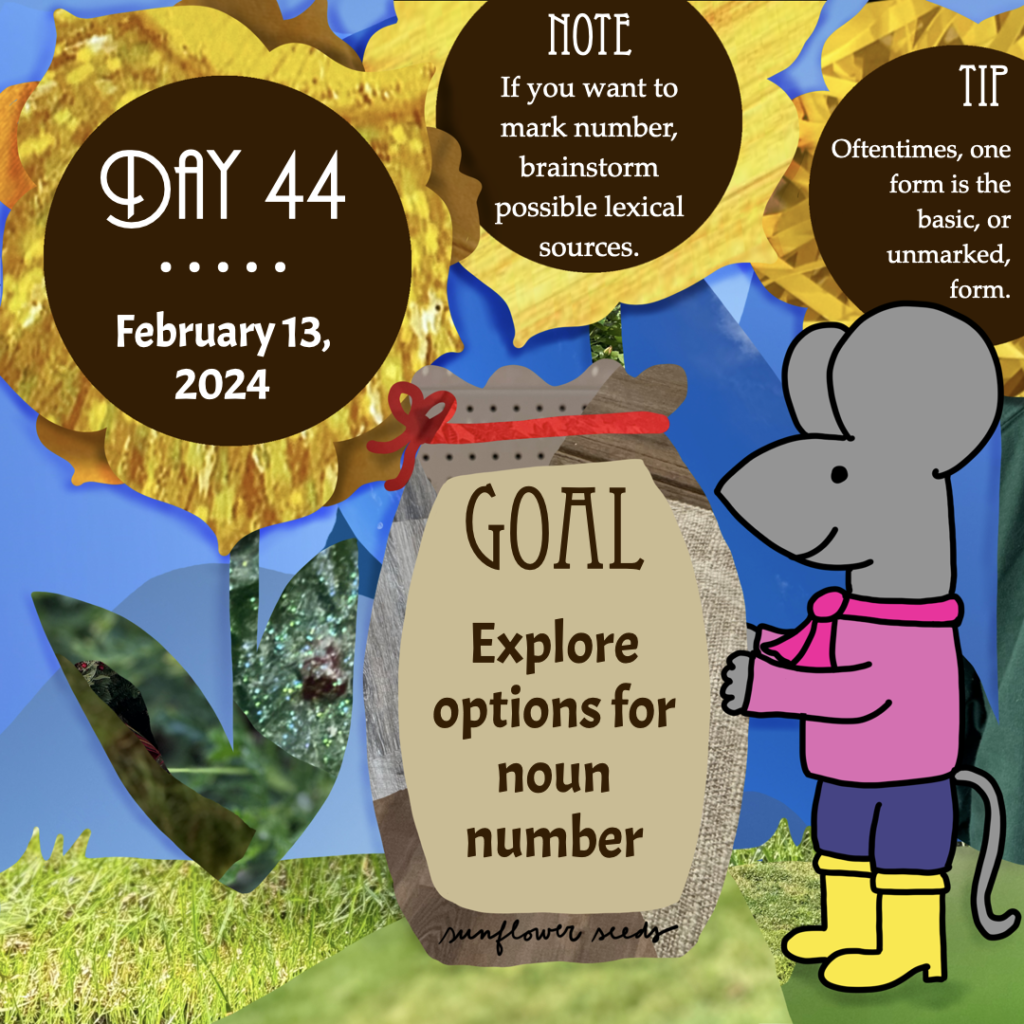
Goal: Explore options for noun number
Note: If you want to mark number, brainstorm possible lexical sources.
Tip: Remember that inflections do not need to be attached to the noun base.
Work focus: Brainstorm/Learn/Try
Another common noun inflection is number, which means marking a noun to indicate if it is singular, plural, etc. Some languages do not mark number at all. For instance, consider the word fish in English, which could mean “fish” in the singular or in the plural. In general, context will indicate which interpretation is intended, but speakers can also use modifying words to specify what they mean, such as using a numerical form alongside a noun (e.g. “three fish”) or a quantifying modifier (e.g. “many fish,” “several fish”). Now imagine that all English nouns work that way—that’s how a language with no number marking operates.
If you do want to mark number, some number-marking systems you might consider include the following:
- singular, plural
- singular, dual, plural
- singular, dual, trial, plural
- singular, paucal, plural
- singular, plural, “super” plural (a whole lot!)
- singular, plural, collective (where the collective indicates all of a noun, such as “all cats”)
While I provided some combinations here, these can be mixed and matched differently, depending on the system you want to set up.
Quite often, languages will have one unmarked form with the others being marked. In English, singular is the unmarked form for regular nouns (e.g. “cat” does not occur with any marking to indicate its number) while plurals are marked (e.g. “cats” occurs with a suffix to indicate its number). You could choose to have a system that works like that or that works in the opposite way, where the plural is the unmarked form and the singular forms require marking. You could also choose to mark all forms rather than having any unmarked forms.
Once you have decided what kind of number system you’re interested in implementing, brainstorm ideas for lexical forms that could grammaticalize to become number markers. Lexical forms you can consider include “one” for a singular marker and “many,” “three,” “children,” or “group” for plural markers. However, you can also create a system that is unique to your speakers and their world. For instance, David and I had some fun creating number inflections in our language for anthropomorphic dogs and used verbs as the lexical sources. Verbs like “play, pull, run” became grammaticalized as markers within our full inflection system. Whatever you decide to use, be sure it makes sense for your language and speakers.
As with yesterday’s prompt, the goal is simply to select the lexical sources you want to use. The actual forms they take may depend on other inflections.
